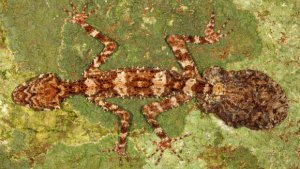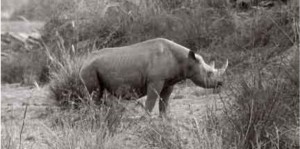
2013: An EcoPress Year in Review
As we approach the end of the year, EcoPress would like to review the significant events, papers, and ideas that have impacted ecology in 2013. Without further ado, here is 2013 in review as seen through the eyes of EcoPress.
Biodiversity matters, and we’re starting to figure out why.
In the past year, and the two previous, some great work has come out advancing our mechanistic understanding underlying a relationship that has fascinated ecologists for over 50 years: the generally positive relationship between biodiversity and the stability of ecosystem productivity through time. This phenomenon has perplexed such giants of ecology as Charles Darwin, Charles Elton, and Robert MacArthur, and more recently David Tilman, Brad Cardinale, Michele Loreau, and Claire de Mazancourt (among many others). Considerable effort over the last twenty years has focused on controlled experiments to detect the general trend between diversity (the number of species) and ecosystem function (productivity and the stability of productivity through time) — before we could begin to understand these relationships, we had to make sure the trend was really there. The consensus is in. Biodiversity enhances ecosystem stability through time, and now our task is to figure out why.
Throughout 2012 and 2013 ecologists have reanalyzed classic biodiversity-ecosystem function experiments from around the world using new statistical tools to test new theoretical expectations. One large effort led by Claire de Mazancourt provides the first testable prediction of community/ecosystem stability through time by focusing on how the synchrony of species’ responses to environmental fluctuations, intrinsic demographic variation, and species dominance interact at the population level to produce emergent stability. The theory fared reasonably well when confronted by data from biodiversity experiments, but the real advance was to bring together several lines of theory into one prediction and provide new insight into the role within-species demographic variation may play in ecosystem stability.
Building on these ideas, a paper out on early view in American Naturalist by Kevin Gross and others confirms the general trend of diversity begetting stability, but with a new twist on the mechanism — contrary to popular theory, their results provide no support for the idea that species-specific responses to environmental variation should drive the response of stability to species richness. While their study did find compensatory dynamics among species (species A increases in one year while species B decreases in the same year), these differences were unrelated to “how similarly or dissimilarly species respond to environmental fluctuations.” This actually runs counter to the theory proposed by de Mazancourt et al.
We are gaining considerable ground in our understanding of why diversity stabilizes ecosystems and communities, but the countervailing results described above show we still have a ways to go. Indeed, biodiversity-stability analyses can be skewed by the theory upon which they are predicated, meaning different researchers can find different results from the same data. Hopefully we are on the verge of a great synthesis, as so eloquently argued for by Brad Cardinale in Elementa.
In the coming years I expect biodiversity-stability work to coalesce around mechanistic theory aimed at explicitly expressing the theory by de Mazancourt et al. in terms of species interactions and resource use. While some of this may seem rather esoteric, understanding how and when diversity stabilizes ecosystem function is critical as we face ever increasing rates of extinction. There’s been a lot of progress, and this is a question in ecology we just might see solved by the end of the decade.
-Andrew Tredennick
Remarkable creatures of all shapes and sizes were discovered…

2013 marked the discovery of several radical-looking new vertebrate species. These include the Cape Melville leaf-tailed gecko (Saltuarius eximius), shade skink (Saproscincus saltus), and blotched boulder frog (Cophixalus petrophilus) in northern Australia; the fuzzy-faced olinguito (Bassaricyon neblina) in the cloud forests of Ecuador; a new porcupine species (Coendou baturitensis) in Brazil’s Baturite mountain range; and a new species of tapir (Tapirus kabomani) in the southwestern Amazon. And those are simply some of the more charismatic critters from a list of thousands that also includes a few amazing invertebrates and a handful of prehistoric creatures for good measure.

Also this year, WWF reported that between 2010-2013, scientists discovered 441 new species in the Amazon alone: 258 plants, 84 fish, 58 amphibians, 22 reptiles, 18 birds, and one mammal. Among them were a vegetarian piranha (Tometes camunani), a purring monkey (Callicebus caquetensis), and a passion flower with filaments that look like purple spaghetti strands spilling from its center (Passiflora longifilamentosa). In addition, the visually arresting Pinocchio lizard (Anolis proboscis), presumed extinct for nearly 40 years since it was first described in 1953, was rediscovered in Ecuador this year. It turns out this lizard wasn’t gone after all, just keeping a low profile way up in the canopy…
To put 2013’s awe-inspiring amalgam of species discoveries into perspective, according to the Global Biodiversity Information Facility, there are 1,426,888 species currently known (and nearly that many more awaiting confirmation), while our best estimates suggest that the total number of species on Earth is upwards of 8.7 million, not including bacteria & archaea (Mora et al. 2011 PLOS Biology); although estimates range from 3-100 million species. We have certainly come a long way in our efforts and abilities to measure the world’s biodiversity, yet we may have only sampled about 10% of what is out there. That there are so many species still unknown after 250+ years of taxonomic classification spurs our collective imagination, and provides further inspiration to understand the importance of biodiversity to the many ecosystem goods and services on which humanity depends. Clearly, many thanks are owed to all of the intrepid biologists scouring tall treetops, vast boulder piles, deep sea vents, and poring over DNA sequences!

-Jules Kray
…but we lost the western black rhino to extinction.
Unfortunately, as ecologists we are occasionally reduced to reporting the obituary of nature, and despite the exciting new findings of vertebrate species this year (above), we are confronted with the loss of an unique species of megafauna that has been under extinction pressure for the last half century. In the first week of November, CNN reported that the International Union for Conservation of Nature (IUCN) had officially declared the western black rhinoceros (Diceros bicornis longipes) extinct. The last extensive surveys of the western black rhino, in 2006, failed to find any evidence of the species in its last known range state. A more detailed examination of the rhino’s struggle can be found here.

The IUCN had actually declared the western black rhino extinct in 2011 after five years without any new indications that the species was persisting. Although the official announcement appears to have been made two years ago, the 2013 updates of IUCN records again brought the extinction into the public eye (as first reported by CNN). It is believed that the primary cause for the extinction was widespread poaching and a lack of institutional conservation efforts across its range (Emslie 2011).
Diceros bicornis longipes once ranged through the savannas of central-west Africa, but its last known habitats were in Northern Cameroon. The native range of the black rhino, which includes four sub-species, including the now extinct longipes, includes savannas throughout Africa from as far north as Sudan and Chad, through the eastern part of the continent into South Africa. Black rhinos prefer nutrient-rich soils and succulent valley bushveld areas, and are browsers that favor small Acacia’s and other palatable woody species (Grewia’s, Euphorbiacea species etc.) as well as palatable herbs and succulents. The carrying capacities of the black rhino are related to rainfall, soil nutrient status, fire histories, levels of grass interference, extent of frost and densities of other large browsers (Emslie 2012).
RIP Diceros bicornis longipes.
-Aaron Sidder
The Landsat 8 satellite successfully launched and began operations.

On February 11, the Landsat Data Continuity Mission was launched aboard the Atlas V-401 rocket from Vandenberg Air Force Base. After a 100-day commissioning period, the mission officially began normal operations on May 30 and leadership transferred from NASA to the USGS. Landsat 8 is the newest earth observing satellite in the Landsat family and continues the unbroken record of observations dating to 1972. The Landsat 8 satellite carries two sensors—the Operational Land Imager (OLI) and the Thermal Infrared Sensor (TIRS). These two sensors provide seasonal coverage of the global landmass at a spatial resolution of 30 meters (visible, near infrared, shortwave infrared); 100 meters (thermal); and 15 meters (panchromatic). These instruments represent an evolutionary advancement in sensor technology and include 3 new bands. Two of these bands provide more precision in the thermal region and the third is tailored to detect cirrus clouds and coastal developments.
The Landsat mission is a critical tool for assessing change in terrestrial systems. The free and easily accessible data is available to scientists around the world and may be the largest and highest quality source of free data in science. Landsat 8 is a significant development in remote sensing and should be valuable source of data for years to come.
The Landsat OLI sensor has already provided us with some stunning images, such as the scene below which depicts a tropical estuary in western Australia. A description of the image from the USGS Landsat 8 image gallery: “This image is a portion of the first Landsat 8 scene acquired May 12, 2013 (Path 107, Rows 70-71) in Western Australia. Geoscience Australia, a Landsat International Cooperator and a Landsat Science Team Member, produced this enhanced image. Water and land were masked, separately enhanced, and then reassembled. The water patterns are the result of an RGB display of the Landsat 8 red, blue, and ultra-blue bands (bands 4, 2, 1) and the land is shown using SWIR, NIR, and green (bands 6, 5, 3). The resulting image displays impressive sediment and nutrient patterns in the tropical estuary area, and the complex patterns and conditions in the vegetated areas.”

More breathtaking images like the scenes above are available for download via the USGS Landsat 8 image gallery.
-Aaron Sidder
A new model links metabolism and photosynthesis in plants.
Plants’ existential struggle is to sacrifice water for CO2. Plants photosynthesize CO2 into carbohydrates for metabolism, and so open stomata to take in CO2 from the atmosphere. But when plants open stomata, they lose water to the atmosphere because the air is almost always drier than the inside of a plant. This sacrifice of water for CO2 is arguably at the center of how plants evolved on land. Vascular systems, xylem and phloem, developed to transport water to leaves, and allowed plants to grow upward and outcompete neighbors for light. Different types of photosynthesis, C3, C4, and CAM, arose independently in multiple lineages, allowing some plants to open stomata at night when the air is less dry.
Because this sacrifice is central to photosynthesis, we have paid a lot of attention to it in modeling photosynthesis. Most do so by combining two models, a biochemical model of CO2 assimilation published in 1980 by Farquhar, von Caemmerer and Berry, and a stomata model published in 1987 by Ball, Woodrow and Berry. They describe very well the exchange of CO2 and water between leaf and air, and they are widely used (because they are awesome) and have advanced our understanding of how plants work.
But the models are by no means complete. Though the models describe the most apparent part of the sacrifice of water for CO2, they do not include two hidden but probably very important parts: transport and use of carbohydrates. Plants need water to transport the products of photosynthesis, carbohydrates, from the leaves to wood and roots. And because photosynthesis requires water and other nutrients, plants need to balance photosynthesis with the use of carbohydrates in metabolism. After all, it doesn’t make sense to waste water and nutrients by photosynthesizing more than needed. These hidden parts have never been modeled, until this year.
In their paper, Nikinmaa, Hölttä, Hari, Kolari, Mäkelä, Sevanto and Vesala mathematically link stomatal behavior with the movement of water and carbohydrates from the leaf to the roots. They show that carbohydrate use in metabolism can control carbohydrate transport, and this in turn can control stomata behavior. Their model directly links metabolism, carbohydrate transport, stomata, and photosynthesis. We have known for a while the importance of the hidden parts of plants’ existential struggle. But this study is the first one to actually model them mathematically, bringing the hidden parts to light. It will be interesting to see how other researchers will use this study to advance our understanding of plants.
-Shinichi Asao
In science, people sometimes look forward to new textbooks
Giving a strong start to this year, in January of 2013 we saw the highly anticipated release of the 3rd edition of Biogeochemistry: An Analysis of Global Change by William H. Schlesinger, now joined by Emily Bernhardt. Conversationally shortened to Schlesinger’s Biogeochemistry, or just Biogeochemistry, this is without question the classic, seminal textbook of its namesake field. The 2nd edition held sway for 15 years, serving as the foundation of nearly every biogeochemistry class and sitting on a shelf close at hand of nearly every worker in the field of biogeochemistry since its initial publication in 1997. The discipline of biogeochemistry studies interactions between biology and earth systems and their associated impacts on the chemical cycling of elements (e.g. carbon, nitrogen, phosphorous). Schlesinger’s (and now also Bernhardt’s) Biogeochemistry provides both an expansive interdisciplinary introduction to global biogeochemical cycles as well as an invaluable perspective on human impacts to these cycles. Anticipation for the 3rd edition was built on both the incorporation of exciting advances in the field of biogeochemistry- a new understanding of soil carbon dynamics and shifting perspective on the role of humus, for example- as well as the increasing importance of understanding biogeochemical cycles in order to tackle human impacts such as climate change and problems with nitrogen runoff and deposition.
-Nell Campbell
Climate policy continued to lag behind scientific consensus.
2013 was a big year for climate science. The release of the Intergovernmental Panel on Climate Change’s 5th Assessment report reminded us that scientific consensus on climate change is unwavering. Meanwhile, the atmospheric concentration of CO2 surpassed 400 ppm, which is the highest its been in millions of years, and is also 50 ppm above what many scientists believe to be the safe upper limit. Extreme weather events came one after another, including wildfires in California and Australia, floods in Colorado and Sudan, and Typhoon Haiyan in the Philippines.

2013 was not a big year for climate policy. Let’s start at home. While all of this was happening, the US continued to expand fossil fuel production, surpassing Russia as the world’s largest producer of oil and natural gas, and President Obama has sent mixed messages on climate. Abroad, there was the limited progress made at the annual UNFCCC Conference of the Parties in Warsaw (more here).

Note: Petroleum production includes crude oil, natural gas liquids, condensates, refinery processing gain, and other liquids, including biofuels. Barrels per day oil equivalent were calculated using a conversion factor of 1 barrel oil equivalent = 5.55 million British thermal units (Btu).
What can we expect in 2014? With a UN Climate Summit and the 20th Conference of the Parties planned, some think that climate change policy may begin to catch up to the science. Stay tuned.
-Jocelyn Lavallee